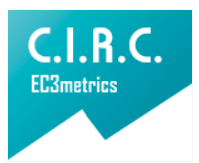Digitization of the Functional Swallowing Line
Digitalización de la Línea Funcional de la Deglución Strategy For Speech-Language Pathology Assessment
Main Article Content
Purpose: to digitize the functional line of swallowing with liquids as a screening strategy in speech and language pathology. Methods: the planning of the proposal supports the development of comprehensive research with a projective holotype that conceives practical problems, points to specific applications and proposes solutions to how to do things, inspired by research results: the application is developed under a programming language oriented to Java Objects to be executed on mobile devices with Android; The prototype allows the qualification of the valvular function and at the end of the test a diagnostic impression is based on the diagnostic proposal suggested by the functional line initiative. Conclusions: the digitization proposal makes its action more flexible by thinking of responding not only to a valvular conception of swallowing, but also to the conception of deglutary phases or functional units. It is projected as an evaluative strategy, but also as a support instrument to support the treatment actions based on the analysis of the descent of the line.
Keywords: Speech, Language and Hearing Sciences; Evaluation; Technology. (Source: DeCS).
Publication Facts
Reviewer profiles N/A
Author statements
Indexed in
- Academic society
- Bogotá: Corporación Universitaria Iberoamericana
- Publisher
- Bogotá: Corporación Universitaria Iberoamericana
Article Details
Balestrini Acuña, M. (2006). Cómo se elabora el proyecto de investigación: (para los Estudios Formulativos o Exploratorios, Descriptivos, Diagnósticos, Evaluativos, Formulación de Hipótesis Causales, Experimentales y los Proyectos Factibles). Caracas: Consultores Asociados.
Cámpora, H., & Faltuti, A. (2012). Evaluación y tratamiento de las alteraciones de la deglución. Rev Am Med Resp., 3(1), p. 98-107.
Cervantes Ojeda, J., & Gómez Fuentes, M. d. (2012). Taxonomía de los modelos y metodologías de desarrollo de software más utilizados. Universidades(52), 37-47. Obtenido de http://www.redalyc.org/articulo.oa?id=37326902005
Chiavarro, N. (2011). Funciones y Disfuncionaes Estomatognáticas . Buenos Aires : Akadia
Delgado, E. (Dic de 2008). Metodologías de desarrollo de software. ¿Cuál es el camino? Revista de Arquitectura e Ingeniería, 2(3).
Du V Florey, C. (1994). DE LA EPIDEMIOLOGIA A LA SALUD PUBLICA. Rev San Hig Pub, 68, 107-114.
García-Rochín, R. ( enero-abril de 2007). ¿Qué es la informática de la salud? Red de Revistas Científicas de América Latina, el Caribe, España y Portugal, 13(1), 607-610.
Giacomantone, O., & Suarez, I. (2009). Profesionalismo Médico, surelación con la Educación Médica del Siglo XXI. Educación Médica Permanente, 1(1), 4-18.
Hurtado de Barrera, J. (2010). Metodología de la investigación. Guía para la comprensión holística de la ciencia (Cuarta ed.). Caracas:: Quirón Ediciones.
Logemann, J. (Nov de 1988). Swallowing physiology and pathophysiology. Otolaryngol Clin North Am, 21(4), 613-623. DOI: https://doi.org/10.1016/S0030-6665(20)31488-2
Margolis, A. (Octubre de 1996). la informática en salud. Posibilidades y desafíos. Rev Med Uruguay, 12(2), 81-98.
Organización Panamericana de la Salud. (26 al 30 de Septiembre de 2011). ESTRATEGIA Y PLAN DE ACCIÓN SOBRE eSALUD. 51.º CONSEJO DIRECTIVO y 63.a SESIÓN DEL COMITÉ REGIONAL (pág. 15). Washington, D.C., EUA: OPS y OMS.
Rietveld, Francis; Alamo, Gilma; Natera, Leidi. 2006. Hacia una metodología para la investigación tecnológica. Maracaibo, Venezuela: Astro Data.
Stair, R., Reynolds, G., & Chesney, T. (2012). Fundamentals of Business Information System (Second ed ed.). Andover, Hampshire, United Kingdom: Cengage Learning EMEA.
Vargas, M., Hincapié, P., Fornés, D., & Pérez, A. (abril / septiembre de 2016). LÍNEA FUNCIONAL COMO HERRAMIENTA DE SCREENING. Revista Signos Fónicos , 2(1), 29-4

















